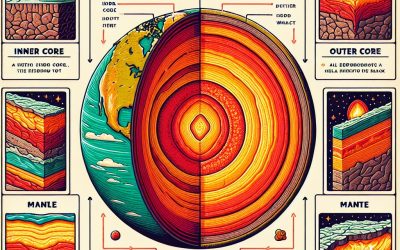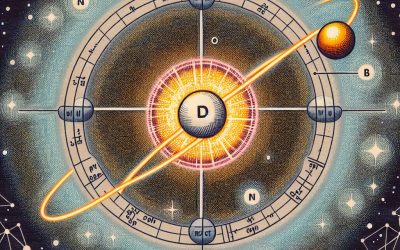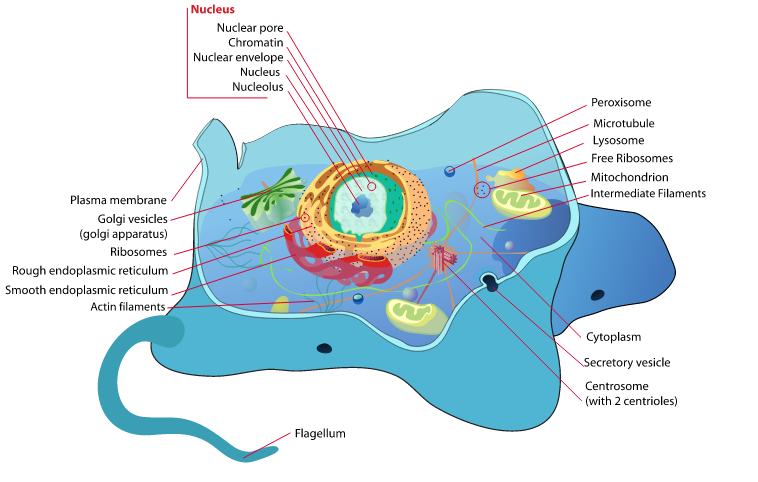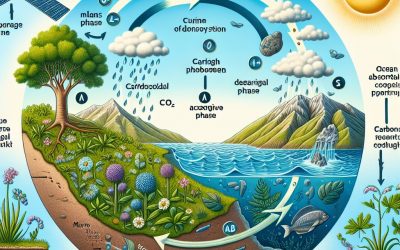Explore the World Through Geography, Natural Resources & Daily History
Clear, reliable and engaging guides that help you understand our planet — from UK geography education to global natural resources and On This Day history events.
Explore, discover, and learn about the wonders of our world! At Earth Site, we’re passionate about bringing geography, history, and science to life for curious minds of all ages. Whether you’re delving into historical events, uncovering the mysteries of the natural world, or seeking interactive resources, you’re in the right place.
Here, you can uncover the stories behind historical events, explore the natural wonders of our planet, and gain valuable insights into how the Earth’s systems shape our daily lives. From the towering peaks of mountain ranges to the far-reaching impacts of human innovation, we aim to make every topic both engaging and informative.
Start your journey of discovery with us today, and let’s make learning an adventure!
What We Cover
Earth Site brings together engaging and accessible educational content designed to help you understand the world, its history, and its natural systems.
🌍 Geography Education (UK & Worldwide)
We publish clear, easy-to-understand geography resources for students, teachers and curious learners. Our guides support geography education in the UK and cover physical geography, climate, ecosystems, population, and global development.
⛏️ Natural Resources & Environmental Geography
Explore detailed country profiles covering natural resources, mining, energy, geology and global environmental challenges. We show how nations manage minerals, water, land and ecosystems, and why these resources matter.
📅 On This Day in History
Every day has a story. Our On This Day history series features major events, anniversaries, traditions, and cultural milestones from around the world — with timelines, context, and fun facts.
TIMELINE
Structure of the Earth
Essentially the structure of the earth consists of a hard iron core which sits at the centre of a molten liquid sphere surrounded by a solid crust of rock. But there is much more to these layers each with very specific properties which are required for life on earth. Structure of the Earth The Inner Core The Outer Core The Mantle The Lower Mantle The Upper Mantle Asthenosphere Lithosphere The Mohorovicic discontinuity The Crust Oceanic Crust Continental Crust Structure of the Earth Essentially the structure of the earth consists of a hard iron core which sits at the centre of a molten liquid sphere surrounded by a solid crust of rock. But there is much more to these layers each with very specific properties which are required for life on earth. The Earth was formed around 4.5 billion years ago with along with the rest of our solar system (click on the link to learn how the solar system was formed) but due to impact with another planetoid shortly after (see origin of the earth) the earth reformed with a very large iron core. For many billions of years after its formation the earth was a very hot ball of molten rock with a molten iron core but over time through many processes the earth began to cool and new layers began to form the structure of the earth as we know it today. The Inner core The Inner core is the deepest layer in the structure of the earth. It consists of a solid ball, mostly iron with...
DNA
Deoxyribonucleic acid or DNA is found in every cell of every living organism on the planet. It is the code which contains the genetic makeup of the organism. The Structure of DNA Polynucleotides Dideoxynucleic acid molecule consisting of three components: a nitrogenous base, either a purine or pyrimidine; a pentose sugar, either ribose or deoxyribose and a phosphate group. A nitrogenous base + a sugar= nucleoside; a nucleoside + a phosphate= nucleotide. Purine: nine member double ring: Adenine and Guanine (A and G) Pyrimidine: six member single ring: Cytosine and Thymine or Uracil in Rna (C, T and U) A purine bases will always bind to its corresponding pyrimidine base: A-T/U and C-G. Structure of DNA Each carbon atom of the pentose sugars is labelled with a prime sign eg. C-1’. The C-1’ atom of the pentose sugar is linked to the nitrogenous base and C-3’ and 5’ atoms are termini of a nucleic acid molecule. At the C-2’ position, deoxyribose has a hydrogen atom whereas ribose has a hydroxyl group. The presence of the OH group distinguishes RNA from DNA. http://www.mun.ca/biology/scarr/iGen3_02-07_Figure-L.jpg Polynucleotides Two nucleotides are joined together by a phosphate group linked to two sugars. The phosphoric acid is joined to the two OH groups on the sugars by an ester linkage on both sides, creating a phosphodiester bond. At one end of the chain there is a free 3’- hydroxyl (OH) group and at the other end, a free 5’- phosphate group. Two nucleotides joined together are called a dinucleotide, three is...
Diamond Formation
Diamond formation occurs naturally in the earth’s crust but it is now possible to produce diamonds artificially in labs from any carbon. What Are Diamonds Age and origin of Diamonds Diamond Formation in The Earth’s Crust Diamond Formation through Plate Tectonics Diamond Formation in Space What Are Diamonds Diamond formation occurs from the same element as coal and graphite (carbon) but under immense pressure and heat energy, normally only found naturally in the depth of the earth or in outer space, that carbon becomes the strongest material on earth. Diamonds immense strength is due to the complex lattice shown on the left. This pattern continues throughout the diamond and each carbon atom (shown as black spheres) is bonded (shown as grey tubes) in such a way that gives the entire structure unrivalled strength. Age and Origin of Diamonds Diamonds are not formed by coal as commonly thought. In fact most diamonds were formed before plant life, and therefore any possibility of coal, began. Through radioactive dating it has been possible to calculate that most diamonds date back to the Precambrian eon which means they were formed approximately 100 million years before life. Coal is a sedimentary rock that is formed of carbon from decomposed organic material. Diamonds however are found in igneous rocks which are formed from cooled molten lava. Diamonds are formed in the Earth’s mantle, approximately 90 to 120 miles below the surface. This region, known as the diamond stability zone, is characterized by extreme temperature and pressure conditions. The process begins with carbon atoms being subjected to intense heat and pressure, causing them to rearrange their...
Deuterium
Basic Information Discovery of Deuterium Sources of Deuterium Uses of Deuterium Deuterium in stars Energy Production through Nuclear Fusion Ultra Dense Deuterium Deuterium’s Cell Structure Electron Orbit of Deuterium Absorption Lines of Deuterium Emission Lines of Deuterium Deuterium – Greek deuteros meaning ‘second’ (Heavy Hydrogen) Classification: Non-metallic Atomic Mass: 2.01 Density: 0.168 kg/m3 Colour: Boiling Point: -249.6 °C Melting Point: -254.6 °C Critical Temperature: -234.8 °C Discovery: American physical chemist Harold Urey discovered Deuterium in 1931 for which he received a Nobel prize. Sources: Deuterium was created with normal hydrogen and helium just after the big bang and, due to deuterium’s mutation in stars, its level of abundance has reduced since then. Although produced in stars through nuclear fusion, deuterium particles are quickly fused into helium atoms. Uses of Deuterium: Heavy hydrogen, as Deuterium is sometimes called, is used to create heavy water which has many uses in the field of nuclear power and uranium refinement for nuclear weapons. Hydrogen in its basic form contains one proton within its nucleus where as deuterium, which is a stable isotope of hydrogen, contains one proton and one neutron. Due to the extra neutron its atomic mass is doubled hence its nickname of heavy hydrogen. Applications of Deuterium: Nuclear Fusion: One of the most significant applications of deuterium is in nuclear fusion reactions. Nuclear fusion, the process of combining atomic nuclei to release energy, often involves the fusion of deuterium nuclei. This reaction releases an immense amount of energy, making it a potential solution to the world’s energy crisis. Aerospace Propulsion: Deuterium has also found use in aerospace propulsion systems. Its high...
Decay Chains
Decay Chains is the name given to the stages of radioactive decay of unstable isotopes or elements. Some radioactive isotopes decay into stable isotopes directly but some unstable or radioactive isotopes decay into other unstable isotopes many times before becoming stable and these stages are explained in the ‘decay chain’. These decay chains can be useful when radioactively dating samples by comparing the ratios of the isotopes in the chain. Decay Chain of Uranium-238 Below is the decay chain of Uranium-238 which is the most common isotope on earth. The stages shown in the table are the most likely outcome of radioactive decay naturally however at some stages it is possible for some of the elements to succumb to either alpha or beta decay which obviously changes the outcome. The possible variations and their likely hood and are shown in the key below. Stage Symbol Element Radiation Half-Life Decay Product 1 U-238 Uranium-238 alpha 4,460,000,000 years Th-234 (92U238 = 2He4 + 90Th234) 2 Th-234 Thorium-234 beta (β) 24.1 days Pa-234 (90Th234 = 91Pa234 + 0e-1) (see #1) 3 Pa-234 Protactinium-234 beta (β) 1.17 minutes U-234 (91Pa234 = 92U234 + 0e-1) (see #1) 4 U-234 Uranium-234 alpha 247,000 years Th-230 (92U234 = 90Th230 + 2He4) 5 Th-230 Thorium-230 alpha 80,000 years Ra-226 (90Th230 = 88Ra226 + 2He4) 6 Ra-226 Radium-226 alpha 1,602 years Rn-222 (88Ra226 = 86Ra222 + 2He4) 7 Rn-222 Radon-222 alpha 3.82 days Po-218 (86Ra222 = 84Po218 + 2He4) 8 Po-218 Polonium-218 alpha 3.05 minutes Pb-214 (84Po218 = 82Pb214 + 2He4) (see #2) 9 Pb-214 Lead-214 beta (β) 27 minutes Bi-214 (82Pb214 = 83Bi214...
Cepheid Variables
What are Cepheid Variables? Why are they useful? Measuring the Milky Way Hubble’s work with Cepheid Variables Existence of other galaxies The Expanding Universe Dark Energy Dating the Universe What are Cepheid Variables? Certain stars called Cepheid Variables have changes to their magnitude which increase and decrease at regular intervals (or periods). This image is from NASA’s Hubble telescope showing RS Puppis, as Cepheid Variable with a period of 40 days and a change in magnitude of around 5 factors. Why are they useful? In 1912 American astronomer, Henrietta Leavitt, came up with a way to use the characteristics of Cepheid Variables to calculate their distance. The periods of changes in magnitude from Cepheid Variables vary from star to star but, if the period is recorded, the variation in magnitude can be used to calculate the distance. Some of these Cepheid Variables were close enough to have their distance measured using the parallax method (see below). Henrietta Leavitt noticed a relationship between the absolute magnitude and the star’s period allowing modern astronomers to accurately calculate the distances of stars far beyond the parallax method. It is this technique that has allowed modern astronomers to calculate the size and shape of our galaxies, distant galaxies and even help calculate the age of our universe. The bright blue star is one of 50 cepheid variables used to measure the distance of galaxy NGC 4603 which they inhabit. It is one of the furthest galaxies measured using the method and is believed to reside 107,000,000 light years...
Cells and Cell Structure
The term organism means anything that is living and all organisms whether they are plant, animal, bacteria are made of microscopic cells, each type with unique cell structure. Common Characteristics of all cells Cytoplasm Plasma Membrane Ribosomes Types of Cells Prokaryotic Cells Bacteria cell Pili Plasmids Nucleoid Bacteria Cell Wall Capsule Prokaryotic Flagellum Eukaryotic Cells Similarities of Eukaryotic Cells Nucleus Endoplasmic Reticulum Rough Endoplasmic Reticulum Smooth Endoplasmic Reticulum Golgi Apparatus Vacuole Mitochondria Animal Cells Unique Characteristics of Animal Cells Lysosome Plant Cells Unique Characteristics of Plant Cells Chloroplast Plant Cell Wall The term organism means anything that is living and all organisms whether they are plant, animal, bacteria are made of microscopic cells. In fact all life on earth began as single celled organisms which over time have combined into more complex life forms. The question as to whether a virus is alive or on the border between life and a bag of chemicals is widely contested. Many biologists maintain that viruses are not living as they are not made of cells. Additionally viruses do not multiply by themselves but instead infect a host cell which replicates and copies the virus as it does so. The question as to whether a virus is alive or on the border between life and a bag of chemicals is widely contested. Common Characteristics of all cells All cells contain a plasma membrane and cytoplasm. Cytoplasm Cytoplasm is a fluid that surrounds the inner-workings of the cells and allows the Ribosome to float around in all the cells. The Ribosome are small spheres that...
Carbon
Basic Information Discovery of Carbon Sources of Carbon Uses of Carbon Carbon Dating The Carbon Cycle Carbon Fibres Diamonds Carbon’s Cell Structure Absorption Lines of Carbon Emission Lines of Carbon Carbon (from the latin word ‘carbo’ meaning coal) Classification: Non-metal (solid at 298 K) Atomic Mass: 12.0107 g/mol Density (graphite): 2.267g/cm3 Density (Diamond): 3.513g/cm3 Colour: Diamond has no colour / graphite is black Boiling Point: 4300K (4027°C) Melting Point: 3800K (3527°C) Discovery The production of carbon in the form of charcoal has been known since records began. Sources Charcoal was produced by burning organic material in an atmosphere with reduced oxygen. Although it is possible to make superb diamonds artificially the most precious kind are produced naturally under extreme pressure over a very long period of time. Uses The ratio of carbon on earth is thought to be 99% carbon-12, just under 1% Carbon-13 and 0.0000000001% of carbon-14 with the same ratios found in all living things. Carbon-14 is an unstable isotope of carbon which can be used in the process called carbon dating. As all living things intake carbon in the above ratios, when an organism dies the Carbon 14 begins to decay. This means that over time the carbon 14 ratio decreases over time and this decrease can be measured. As scientists know the decay rate of Carbon 14 they can measure the approximate time since the organism died. Carbon is one of the fundamental building blocks of life and most carbon would have been through a process we call the Carbon Cycle. This...
Carbon Fibres
Who Created Carbon Fibres? Development of Carbon Fibres Difference between Rayon, Pitch and PAN Carbon Fibres Manufacture of Carbon Fibres PAN Carbon Fibre Production through Pyrolysis High-Strength Fibres High-Modulus Fibres and Graphitisation Creation of Carbon Fibres? The first known use of carbon fibres dates back to 1860 when an English physicist by the name of Sir Joseph Swan created the world’s first incandescent light bulb. He initially created it with a carbonized paper filament in a vacuum tube but later improved on his design in 1878 by using a carbon fibre filament derived from cotton. When Thomas Edison took out a patent for the manufacture of his light bulb in 1879 of the same design he proposed using carbonised bamboo as his filament. Edison took bamboo and heated it in a controlled atmosphere (a method known as ‘pyrolysis’ which is used in the manufacture of carbon fibres today) which produced fire-resistant carbon fibres. The fibres produced by Swan and Edison had no tensile strength but could withstand high temperatures making them perfect for use in his bulbs. In 1883 Swan produced the world’s first synthetic fibre when he squeezed nitrocellulose – obtained from tree bark- through holes to produce fibres which he could use as a new filament. This revolutionised the textile industry and led to his knighthood in 1904. All the filaments produced proved inefficient, requiring high currents to produce light and soon they were replaced with tungsten. Development of Carbon Fibres It would be around 50 years before experiments with carbon fibres would take place. In...
The Carbon Cycle
Plants to animals Fossil Fuels Calcium Carbonate Our planet has got many systems or cycles in place that allow for the re-use of materials which are vital for life. These include nitrogen, water and carbon. The recycling of these vital materials helps support the continued existence of life that would otherwise end. We, as all living things, do not simply use this cycle but are a part of it. Plants to animals...
Boron – Metalloid
Boron is a relatively rare metalloid both on earth and in the rest Universe. It is produced from cosmic rays and extracted from Borate minerals. Basic Information Discovery of Boron Sources of Boron Uses of Boron Boron In The Diet Use in the Nuclear Industry Use In Glass Boron’s Cell Structure Absorption Lines Emission Lines Classification: Metalloid Atomic Mass: 10.811 (7) g/mol Density: 2.34g/cm3 Colour: black Boiling Point: 4200K (3927°C) Melting Point: 2349K (2076°C) Discovery of Boron Boron (5B) compounds were used by ancient civilizations for thousands of years but the element itself wasn’t isolated until 1828. English Chemist Sir Humphrey Davy (whose assistant was Michael Faraday) originally used electrolysis to create 5B from a borates solution and named the substance boracium. Later he used boric acid combined with potassium to produce a purer form of 5B. This method was used by French chemists Joseph-Louis Gay-Lussac and Louis-Jaques Thénard Sources Commercially 5B is obtained by heating borax (Na2B4O7 10H2O) with carbon. Uses Boron can be taken as a dietary supplement and found naturally in various foods. Some evidence has shown that boron in your diet can help reduce bone loss, reduce the symptoms of osteoarthritis, improve cognative ability and cordination in older people and increase testosterone levels. There is not yet enough evidence to prove conclusively that this is the case. 5B is found naturally in fruits (such as raisins, avacado, prunes, apricots) beans and nuts (particularly brazil, hazil and cashew) or taken in supplements though anymore than 20mg a day is considered...
Beryllium: Periodic Table, Uses, Occupational Safety and Health
Beryllium: Periodic Table, Uses, Occupational Safety and Health Basic Information Discovery Sources Uses Use in Telescopes Use in Satellites Cell Structure Absorption Lines Emission Lines Beryllium (named after the mineral, beryl, that it was originally isolated from) Classification: Alkali earth metal Atomic Mass: 9.012182 (3) g/mol Density: 1.85g/cm3 Colour: grey Boiling Point: 2742K (2469°C) Melting Point: 1560K (1287°C) Beryllium: The Lightweight Power Metal Shaping Modern Industry and Safety Standards What makes beryllium so important in science, industry, and worker safety? Beryllium might not be a household name, but this light metal with atomic number 4 holds a significant place on the periodic table and in high-tech industries. Whether you’re flying on an aeroplane, undergoing an X-ray, or benefiting from advanced communication technologies, beryllium plays a hidden yet vital role. This article explores the fascinating properties of beryllium, its various applications—from alloys to nuclear reactors—and the critical occupational safety and health concerns related to its use. If you’re curious about how this relatively rare element shapes modern life, this post is a must-read. Article Outline 1. What Is Beryllium and Why Does It Matter? 2. Where Is Beryllium Found and How Is It Extracted? 3. What Are the Unique Chemical Properties of Beryllium? 4. How Is Beryllium Used in Alloys and Why? 5. How Does Beryllium Help in X-ray Technology? 6. What Role Does Beryllium Play in Nuclear Applications? 7. What Are the Health Risks of Exposure to Beryllium? 8. How Does OSHA Regulate Beryllium Exposure? 9. Why Is Beryllium So Valuable in Aerospace and Defence? 10. What Should You Know About the Future of Beryllium Use?...











